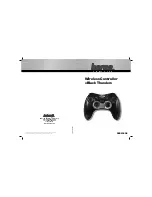
3-26
D30 LINE DISTANCE PROTECTION SYSTEM – INSTRUCTION MANUAL
WIRING
CHAPTER 3: INSTALLATION
3
There is no provision in the relay to detect a DC ground fault on 48 V DC control power external output. We recommend
using an external DC supply.
3.3.6.2 General application considerations
Contacts outputs of protective relays, auxiliary contacts from breakers, disconnectors and other devices are connected
generally to contacts inputs of protective relays. In some situations, the contact outputs of some protective relays can
have high impedance connected across it. When such a contact output is connected across a D30 contact input, it can
spuriously operate the D30 input even when the output is open, if there is a substantial distributed capacitance
(represented by C1) present in the wiring between the output and the D30 input, and the debounce time setting in the D30
relay is low enough. This false assertion of the contact input, when there is inadvertent ground present at the DC positive
terminal, can be prevented by inserting a resistor across the D30 input.
The following figure shows a typical DC circuit, with battery ground detection, of contact input. The contact output has
parallel impedance across it (represented by R1).
Figure 3-23: Typical contact input DC circuit
The presence of the impedance path (R1) across the contact output allows the stray (distributed) capacitance C1 to charge
as shown, thus developing a voltage across the contact input enough to momentarily operate the input while the
capacitance discharges in the presence of DC ground on the positive terminal of the battery.
The duration of the discharge depends on the value of the distributed capacitance, the initial voltage of the distributed
capacitance, and the input impedance of the contact input. If the duration is greater than the debounce time setting, then
the contact input operates.
The application example that follows describes how to mitigate this issue by connecting a resistor across the contact
input, as shown in the next figure, or by adjusting the debounce time setting to a value greater than the discharge time to
prevent spurious operation of the contact input only if the voltage (with output open) across the contact input due to trickle
current is less than the threshold voltage. This operation of contact inputs also can be prevented by using the Auto-Burnish
contact inputs or contact inputs with active impedance.
Содержание D30 series
Страница 10: ...x D30 LINE DISTANCE PROTECTION SYSTEM INSTRUCTION MANUAL TABLE OF CONTENTS ...
Страница 14: ...1 4 D30 LINE DISTANCE PROTECTION SYSTEM INSTRUCTION MANUAL FOR FURTHER ASSISTANCE CHAPTER 1 INTRODUCTION 1 ...
Страница 52: ...2 38 D30 LINE DISTANCE PROTECTION SYSTEM INSTRUCTION MANUAL SPECIFICATIONS CHAPTER 2 PRODUCT DESCRIPTION 2 ...
Страница 534: ...5 324 D30 LINE DISTANCE PROTECTION SYSTEM INSTRUCTION MANUAL TESTING CHAPTER 5 SETTINGS 5 ...
Страница 564: ...6 30 D30 LINE DISTANCE PROTECTION SYSTEM INSTRUCTION MANUAL PRODUCT INFORMATION CHAPTER 6 ACTUAL VALUES 6 ...
Страница 578: ...7 14 D30 LINE DISTANCE PROTECTION SYSTEM INSTRUCTION MANUAL TARGETS MENU CHAPTER 7 COMMANDS AND TARGETS 7 ...
Страница 614: ...9 26 D30 LINE DISTANCE PROTECTION SYSTEM INSTRUCTION MANUAL FAULT LOCATOR CHAPTER 9 THEORY OF OPERATION 9 ...
Страница 654: ...A 10 D30 LINE DISTANCE PROTECTION SYSTEM INSTRUCTION MANUAL FLEXANALOG ITEMS APPENDIX A FLEXANALOG OPERANDS A ...
Страница 662: ...C 6 D30 LINE DISTANCE PROTECTION SYSTEM INSTRUCTION MANUAL COMMAND LINE INTERFACE APPENDIX C COMMAND LINE INTERFACE C ...
Страница 670: ...iv D30 LINE DISTANCE PROTECTION SYSTEM INSTRUCTION MANUAL ABBREVIATIONS ...
Страница 686: ...xvi D30 LINE DISTANCE PROTECTION SYSTEM INSTRUCTION MANUAL INDEX ...
















































